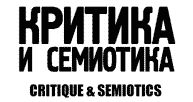MODELING HISTORY: RETROSPECTION AS AN ARTISTIC DEVICE IN WILLIAM ESSEX’S MINIATURES
DOI: 10.23951/2312-7899-2020-4-160-171
The article addresses the artworks of William Essex, an English enamel-painter, who created a series of the Tudors’ historical portraits. In the context of general interest in English history, as well as a certain retrospective trend peculiar for the Victorian era, William Essex`s works exemplify the miniature portraits as the embodiment of images from the past and as something characteristic to the past. The tradition of small-size portraits intended for private contemplation is quite old, and the British, who have succeeded in the development of the portrait genre, have been rather keen on it for several centuries. The article considers William Essex’s miniatures from the point of view of the stylistic and technical aspects of the genre, which allows casting some light on the issues related to the change of perception of this minor art form. The paradox of duplication by Essex of original sixteenth- and early-seventeenth-century miniatures is investigated in the article from the standpoint of the theory and practice of collecting as a way of interaction with history. The reason why the miniatures were commissioned by the Queen is both in necessity to create a gallery of family history of the English crown and in the Victorians` taste for reconstruction of the past. The choice of form for its embodiment is determined by the preference for personal, private miniature art, which gives a sentimental character to the appeal to history. In the context of the origin and spread of daguerreotypes at the time, enamel miniatures act as representatives of images of the past and the phenomenon of the fading handmade art, displaced by new technical means. In addition, Essex’s work on the Tudors’ historical portraits, with his aim for formal and stylistic resemblance, is included in a complex retrospective mechanism, like a double quote, since the sources of the reproduced miniatures were also not painted from the life and had their own originals. The analysis of artistic and imagery methods, characteristic for this series of miniatures, as well as the description of the historical circumstances in which the customer took interest in the specific images from the past, allows exposing a fine line between imitation and stylization, between tradition and idealization. In conclusion, it is stated that the specific artistic experience of the creation of these miniatures reveals a peculiar way to refer to the cultural memory, to assert some family and national values evoked in the process of the formation of the collection. Here the practice of collecting (one of the manifestations of the Victorian visual culture) is closely connected with the modeling of English history and the artistic taste of the era.
Keywords: William Essex, Nicholas Hilliard, portrait miniature, visual representation, collecting, daguerreotype, Bosworth Jewel, mechanisms of retrospection
References:
Agamben, G. (2018). The Man Without Content. Translated from Italian by S. Ermakov. Novoe literaturnoe obozrenie. (In Russian) .
Benjamin, W. (1996). The Work of Art in the Age of Its Technical Reproducibility(pp. 66–91). Translated from German by S. A. Romashko. Medium. (In Russian).
Brilliant, R. (1991). Portraiture. Harvard University Press.
Brosch, R. (2008). Victorian Challenges to Ways of Being: Everyday Life, Entertainment, Images and Illusions. In R. Brosch (Ed.), Victorian Visual Culture (pp. 21–63). Universitätsverlag Winter.
Coombs, K. (2005). The Portrait Miniature in England. V&A Publications.
[Hilliard, N.] (1992). A Treatise Concerning the Art of Limning by Nicholas Hilliard. Together with A More Discourse Concerning ye Art of Liming by Edward Norgate. With a parallel modernized text ed. by R. K. R. Thornton and T.G.S. Cain. The Mid Northumberland Arts Group Carcanet Press.
Korkow, C. (2013). British Portrait Miniature: The Cleveland Museum of Art. Giles.
Lloyd, C., & Remington, V. (1996). Masterpieces in Little. Portrait Miniature from the Collection of Her Majesty Queen Elizabeth II. Boydell Press.
Lodge, E. (1823–1832). Portraits of Illustrious Personages of Great Britain. In 12 vols. Harding & Leppard.
Remington, V. (2010). Victorian Miniatures in the Collection of Her Majesty the Queen. Royal Collection Publ.
Thévoz, M. (2018). L’Art comme malentendu. Translated from French by I. I. Onosov. Izdatel’stvo Ivana Limbakha. (In Russian).
Issue: 4, 2020
Series of issue: Issue 4
Rubric: ARTICLES
Pages: 160 — 171
Downloads: 566










